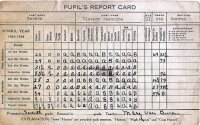The Difference Between Learners and Students
Your content has been saved!
Go to My Saved Content.As academic standards shift, as technology evolves, and as student habits change, schools are being forced to consider new ways of framing curriculum and engaging students in the classroom. Project-based learning is among the most successful and powerful of these possibilities.
As both a planning and a learning tool, PBL challenges teachers to make new decisions about how they plan student learning experiences, while simultaneously empowering students to take a more active role in the learning process.
In this context of trying to make sense of exactly what progressive learning was, in 2009 I sketched out a graphic that visualized 9 Characteristics of 21st Century Learning, and recently created a follow-up framework, the Inside-Out Learning Model.
The four primary goals of this model of learning are:
- Authentic self-knowledge
- Diverse local and global interdependence
- Adaptive critical thinking
- New media literacies
Secondary goals include: purposefully leveraging the diversity of digital media, evolving the traditional definition of project-based learning, the role of play in learning, curiosity, and individualized learning pathways that are digitally curated and transparent to all direct and indirect stakeholders.
In the Inside-Out Learning Model, the idea is personalized learning by new actuators, the elimination of passivity, and full integration with responsive and authentic communities -- not coincidentally, these are also elements of PBL.
The Background
While watching all the ed reform trends come and go, one visual that has often intrigued me is a school that's literally been turned inside out.
This thought first occurred to me as a second-year teacher in rural Kentucky, struggling to clarify to the parents how their son or daughter was performing in the classroom. I found the letter grades incredibly misleading. Learners that were really making strong progress and "learning a lot" would often bring home Cs, while many "A students" would be doing just enough for that A.
And even then, these alphanumeric icons were simply describing trends and compliance, and expressed very little about understanding even as I shifted towards standards-based grading. With letter grades, an A represents complete and total mastery of content, while a B represents above-average understanding, and/or near mastery of content. C means average, and the idea of being "average" was jarring to students, but more so to parents.
C was a death knell, and many times even students with a B had some 'splainin to do, and few seemed to notice this as a problem. There was a need for parents in the classroom, while students needed to be out in the community.
Learners vs. Students
So then, we come to this idea about the difference between learners and students -- there definitely seems to be one.
Students hopefully learn, but the word "student" connotes compliance and external form more than anything intrinsic or enduring.
You might notice the "C students" silently piecing together the learning process for themselves -- internalizing it, throwing out what didn't work, struggling in spots, but all the while becoming learners. They'd rarely question grades or ask, "What can I do for an A?" Instead, they'd focus on the interaction between themselves and the content.
This startling contrast was nearly impossible to clarify for parents when they wanted to know "what was going on.” As a teacher, I wanted a class full of learners, but the grading process was giving me a lot of students who were learning to play the game. The problem, however, was not as much about letter grades and traditional academia as it was about the "form" of the school.
What do I mean by the "form" of the school?
- Its physical layout
- Its tone, from extracurricular programs to academic reputation, certificates, credits, and downright monstrous notions of "achievement"
- The relative lack of diversity of its sources for academic and instructional content
- The internal audiences for school projects
- And most of all, the need for real interdependence between that school and the community it was funded by and built to serve
To move from students to learners -- well, there are probably dozens of ways to make a move like this, but somewhere on that list is using technology, project-based learning, and place-based education to truly turn a school inside-out.
